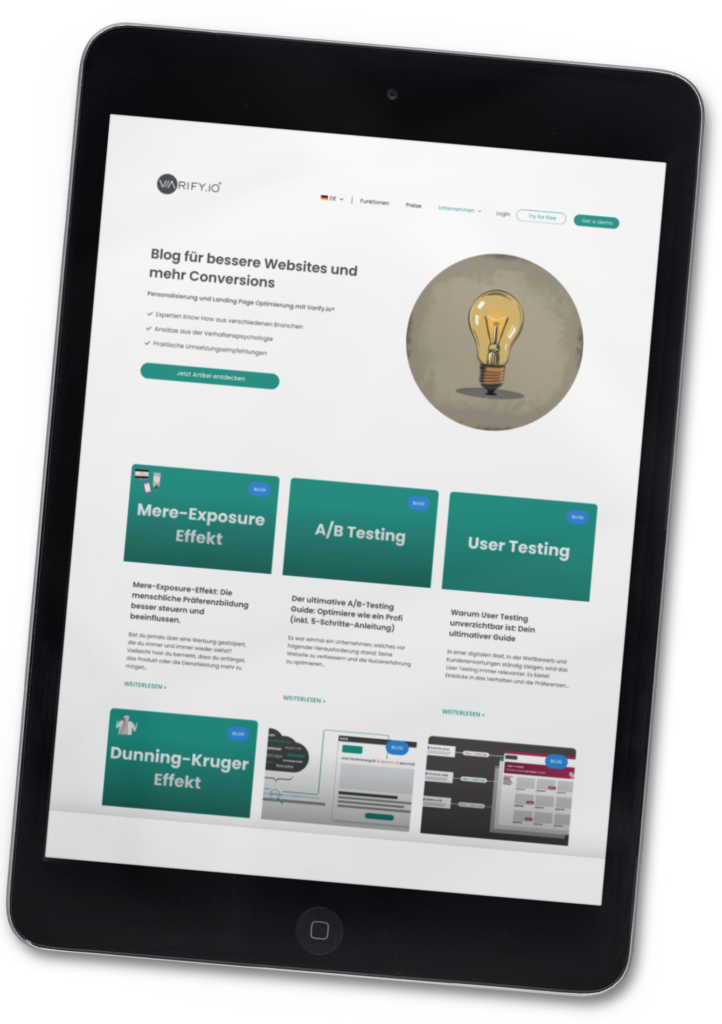Your everyday life is peppered with decisions. From choosing what to wear in the morning to planning your long-term career goals: You're constantly challenged to make decisions.
You rely on your mind, your judgment, and your ability to process complex information. But this process is not always flawless.
This is where cognitive biases come in, systematic errors in your thinking and judgments that influence your behavior and decision making.
Table of contents
What are cognitive biases?
Cognitive distortions are systematic deviations from objective reality. They result from your human tendency to take mental shortcuts - so-called heuristics - to simplify complex information processing. Although these shortcuts are often helpful, they sometimes lead to erroneous conclusions.
The psychology behind cognitive biases
Cognitive biases are deeply rooted in human psychology. They are a byproduct of your cognitive development and probably evolved as survival mechanisms. In the modern world, however, they can lead to irrational decisions.
A classic example is the so-called "confirmation bias," in which you tend to seek out and favor information that confirms your existing beliefs, while ignoring or devaluing contrary information.
How cognitive biases affect your decisions
Cognitive biases influence your decisions and behavior in almost every area of your life. Whether in politics, business, your personal relationships, or your shopping habits, cognitive biases can and do influence how you perceive and respond to the world around you.
In the next part of the article, we will discuss some examples of cognitive biases and explain how they can be used in conversion optimization. We will also look at strategies to overcome these biases.
15 different cognitive biases
There are a variety of cognitive biases that affect our perception and decision making in different ways. Here are fifteen examples:
1. availability heuristic:
This refers to our tendency to make decisions based on information that comes readily to mind. An example of this might be buying a particular brand of running shoes because you recently read a report about their popularity among top athletes, even though there are other brands that might be just as good or better. However, because information about the brand's popularity is readily available, it can influence your purchase decision.
2. confirmation bias:
We tend to look for and interpret information that supports our existing beliefs. For example, if you believe it will rain tomorrow, you might ignore the weather report that predicts sunshine and instead see clouds in the sky as confirmation of your belief.
3. anchor heuristics:
This is our tendency to rely on the first piece of information we receive (the "anchor") when making decisions. For example, if you want to buy a house and the seller asks a high price, you might use that price as a starting point for negotiation, even if the house is actually worth much less.
4. overconfidence bias:
This is our tendency to overestimate our own knowledge, skills and control over situations. For example, an investor might believe that he or she is better able than others to predict market trends, and might thereby make risky investments.
5. hindsight bias:
After an event occurs, we tend to think of it as predictable, even though it was not. After a soccer game, for example, you might feel that you "always knew" your team would lose.
6. framing effect:
Our decisions can be strongly influenced by how information is presented. For example, more people might be willing to attempt surgery if they are told that 90% of patients will survive, rather than hearing that 10% of patients will die. You can learn more about the framing effect here.
7. self-efficacy bias:
This is our tendency to attribute successes to our abilities and failures to external factors. For example, if you pass an exam, you might think it's because of your intelligence, but if you fail, you might blame the teacher.
8. peer pressure:
This refers to our tendency to conform our opinions and behaviors to those of the group with which we identify. For example, you might agree with a political party just because your friends or family do.
9. negativity bias:
This is our tendency to give more weight to negative information than positive. For example, you might remember the one negative comment in an otherwise positive performance review.
10. fundamental attribution error:
We tend to attribute the behavior of others to their personality rather than to the situation. For example, if someone is rude to you, you might assume that the person is being mean instead of considering that they may be having a bad day.
11. conservatism bias:
This is our tendency to hold on to our previous beliefs even when new information challenges them. For example, an investor might continue to invest in a stock even though financial indicators point to a downward trend.
12. salience bias:
We tend to focus on flashy, prominent information and ignore less flashy information. For example, you might focus on how good a car looks instead of less noticeable but more important factors like fuel economy or longevity.
13. bandwagon effect:
The tendency to go along with the majority or popular trend. For example, you might tend to listen to a certain type of music or wear a certain type of clothing just because "everyone else is doing it."
14. Dunning-Kruger effect:
People with low competence in a field often overestimate their abilities, while experts tend to underestimate their abilities. For example, a beginner in chess might think they are very good after winning a few games, while an experienced player might be more critical of their skills. More on the Dunning-Kruger effect.
15. blind spot bias:
This is our tendency to recognize cognitive biases in others but not in ourselves. For example, you might accuse a friend of being guided by the availability heuristic, while not realizing that you yourself are a victim of the confirmation bias.
The role of cognitive biases in conversion optimization
As you now know, cognitive biases affect our everyday lives and decision making - shaping our perceptions and judgments in many aspects of our lives. But how do they affect the business field, especially in the world of online marketing? The answer to this is very interesting. These systematic thinking errors that we commit on an individual level can be used specifically in conversion optimization. In this way, they can significantly influence the buying behavior of users and ultimately lead to an increased conversion rate.
The anchor heuristic, for example, which refers to our tendency to rely on an initial piece of information and build on it, can be cleverly applied. If you see a more expensive product in an online store, followed by a cheaper one, you tend to find the cheaper product more attractive. The first, higher price serves as an anchor and makes the lower price appear in a more favorable light. A smart online retailer could use this technique to influence shopper behavior and increase the likelihood of a purchase.
Another example is the availability heuristic. Following this bias, we tend to judge the likelihood of events based on their mental availability. If you see a lot of positive reviews for a product, you are more inclined to believe that you will have a similarly positive experience. Marketers can capitalize on this by highlighting positive user feedback, customer reviews and success stories to build trust in their product or service.
Also, don't forget about confirmation bias, our tendency to seek and accept information that confirms our existing opinions. Online retailers can take advantage of this bias by designing product information and marketing messages to confirm the beliefs and preferences of the target audience to encourage their purchase decision.
These and many other cognitive biases can be used to guide customers' perceptions and decision-making processes to improve conversion rates. Understanding and properly applying these biases is a powerful skill that enables marketers and entrepreneurs to better understand the needs and behaviors of their customers and more effectively design their offerings.
Strategies to overcome cognitive biases.
Although cognitive biases are a natural part of our thinking process, there are strategies that can help minimize their impact:
Awareness: The first step to overcoming cognitive biases is to become aware of their existence and how they influence our decisions.
Search for contrary evidence: To overcome confirmation bias, actively seek out information that could disprove your current belief or hypothesis.
ask questions: Question the quality of the information available and look for reliable sources.
Take your time: Quick decisions promote cognitive distortions. Take your time for important decisions and consider all options.
Get a second opinion: Other people can help you see your blind spots and point out possible biases in your thinking.
Conclusion
Cognitive biases are deeply embedded in our thought process and shape the way we perceive the world around us and make decisions. Despite their potential drawbacks, by recognizing and understanding these biases, we can make better and more informed decisions.
In online marketing and conversion optimization, these insights can be used to positively influence user behavior and thus increase conversion rates. Through conscious application, marketers can guide user perception and decision-making.
In summary, understanding cognitive biases offers significant benefits to both individuals and organizations. It allows us to act more consciously and increase the effectiveness of our decisions, both personal and marketing.

